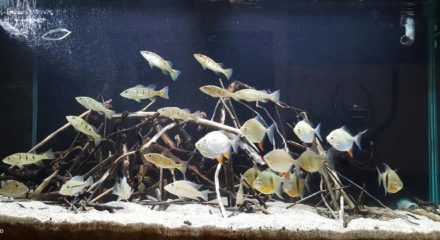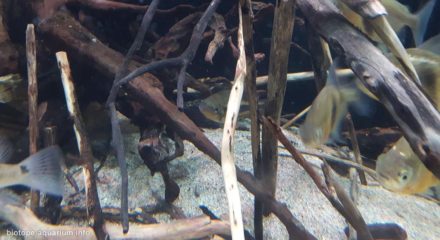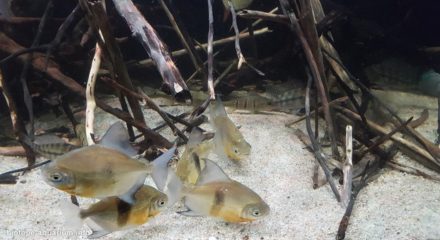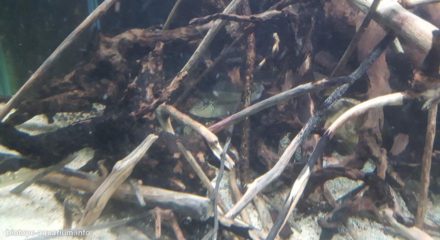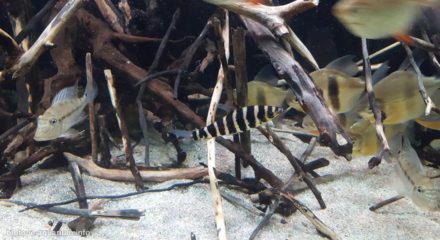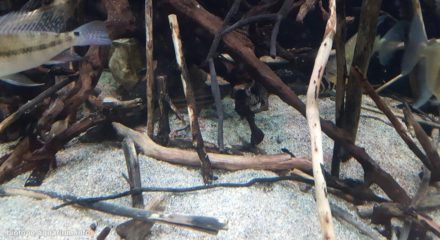Upper/Middle Orinoco Woody Habitat
43rd place in Biotope Aquarium Design Contest 2016
![]() Indonesia. Andy Basuki
Indonesia. Andy Basuki
Aquarium Volume: 630 L
Fish and invertebrates: Apteronotus albifrons, Myleus schomburgkii ‘Wide Bar’, Myloplus rubripinnis, Satanoperca jurupari, Leporinus fasciatus, Leporinus arcus, Leporinus cf striatus, Cichla orinocoensis, Ancistrus sp., Pterygoplichthys gibbiceps
Plants list: none
Biotope description: The Orinoco River Flows through most part of Venezuela and Colombia and is one of the longest rivers in South America. Here in the shelter of wooden structures such as tangled roots and fallen debris such as sticks and some other fallen twigs, is a sandy habitat where many species might call home. The biotope I am building is a depiction of a mixture of roots and tangles with some fallen debris such as sticks and other material over sand in a clearwater habitat that is present in somewhere in the upper to middle Orinoco system. Here, many juvenile fish might make use of the open space and root tangles as hiding spots as well as shelter, while open water species like Myloplus and Myleus as well as juvenile Cichla use the open water space. The sandy bottom also allows the Satanoperca to perform their sand sifting natural behavior as they would behave in the wild. The roots and tangles also provide hiding spots and grazing behavior by the loricariids as well ample hiding space for the Apteronotus to maneuver and weave through the tree roots like they would do in the wild.
Fish and invertebrates: Apteronotus albifrons, Myleus schomburgkii ‘Wide Bar’, Myloplus rubripinnis, Satanoperca jurupari, Leporinus fasciatus, Leporinus arcus, Leporinus cf striatus, Cichla orinocoensis, Ancistrus sp., Pterygoplichthys gibbiceps
Plants list: none
Biotope description: The Orinoco River Flows through most part of Venezuela and Colombia and is one of the longest rivers in South America. Here in the shelter of wooden structures such as tangled roots and fallen debris such as sticks and some other fallen twigs, is a sandy habitat where many species might call home. The biotope I am building is a depiction of a mixture of roots and tangles with some fallen debris such as sticks and other material over sand in a clearwater habitat that is present in somewhere in the upper to middle Orinoco system. Here, many juvenile fish might make use of the open space and root tangles as hiding spots as well as shelter, while open water species like Myloplus and Myleus as well as juvenile Cichla use the open water space. The sandy bottom also allows the Satanoperca to perform their sand sifting natural behavior as they would behave in the wild. The roots and tangles also provide hiding spots and grazing behavior by the loricariids as well ample hiding space for the Apteronotus to maneuver and weave through the tree roots like they would do in the wild.

